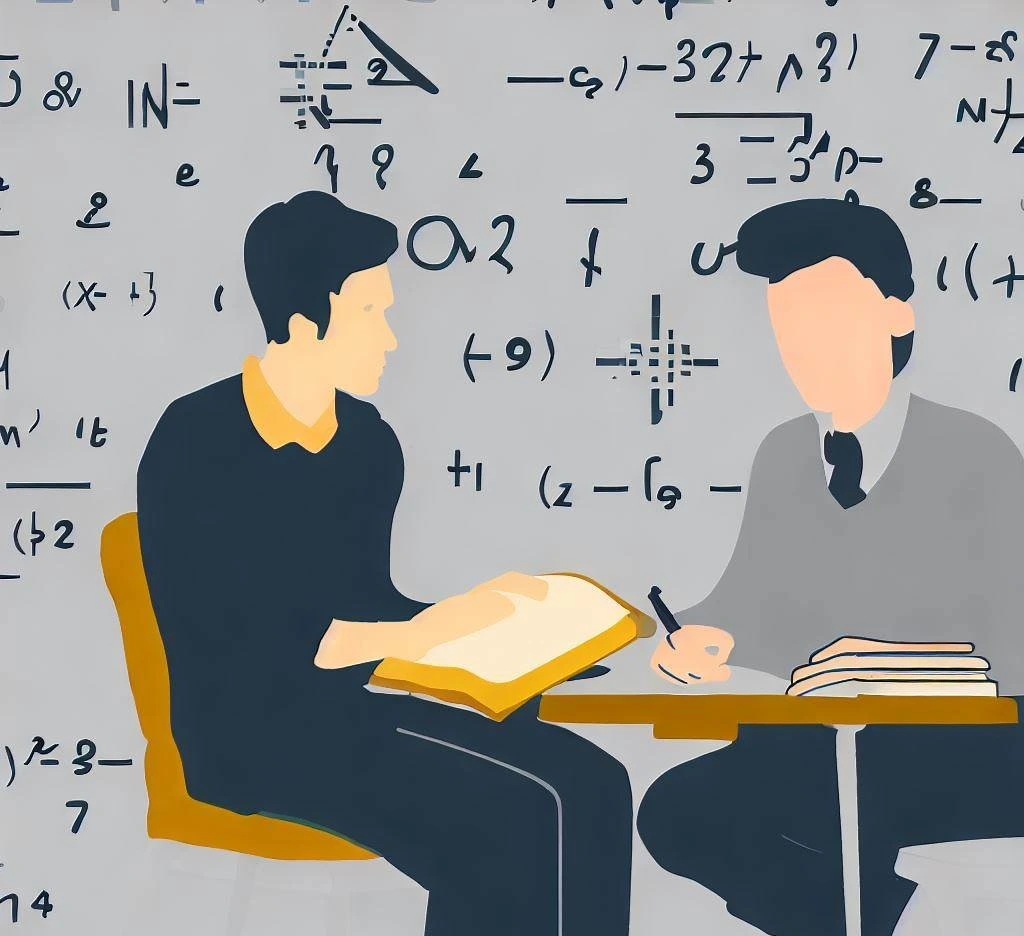Understanding Higher-Order Differential Equations: Key Concepts and Exercises

- Defined and Noted:
Let's define higher-order differential equations before we start our investigation. The highest derivative included in a differential equation is referred to as being of order n if it is. In other words, second derivatives are involved in a second-order differential equation, third derivatives are involved in a third-order differential equation, and so on.

A higher-order differential equation can be written mathematically as:
F(x, y, y', y'', ..., y^(n)) = 0
Here, F denotes a specific function of the independent variable x and the dependent variable y, as well as derivatives of that function up to the nth order. The first derivative of y is denoted by the notation y', the second derivative is denoted by y'', and the nth derivative is denoted by y(n).
- Higher-Order Differential Equations for Linear and Nonlinear Systems:
- Higher-Order Differential Equations for Homogeneous and Nonhomogeneous Systems:
- Using Differential Equations of Higher Order:
- Equations with linear nonhomogeneous differentials can be solved using this method. In order to find the coefficients, one must make an educated guess at a particular solution based on the form of g(x).
- For the solution of linear nonhomogeneous differential equations, the variation of parameters method is also employed. A solution in the form of y_p(x) = u(x) * y_1(x) + v(x) * y_2(x) +... + z(x) * y_n(x), where y_1(x), y_2(x),..., and y_n(x) are known linearly independent solutions of the corresponding homogeneous equation, is assumed.
- For the purpose of solving linear differential equations with constant coefficients, the Laplace transform method is particularly beneficial. The differential equation is transformed using the Laplace transform into an algebraic equation that can be solved to find the solution.
- Higher-Order Differential Equations Applications:
- Pendulums and mass-spring systems are just two examples of the numerous physical systems that oscillate and vibrate. Higher-order differential equations can adequately describe the behavior of these systems. We can understand and predict the behavior of these systems by resolving these equations to find the motion, period, frequency, and amplitude of the vibrations.
- Higher-order differential equations can be used to model the current and voltage flows that take place in electrical circuits. We can identify circuit characteristics like transient responses, frequency responses, and stability by examining the behavior of these equations. For designing and optimizing electrical circuits used in various electronic devices, this knowledge is crucial.
- Dynamic systems' behavior can be controlled and modified using control systems. These systems make use of feedback mechanisms to modify inputs in response to output. For the analysis and design of control systems to achieve desired system performance, stability, and response characteristics, higher-order differential equations are crucial.
- In ecology, epidemiology, and economics, it is crucial to comprehend how populations grow and behave. By taking into account variables like birth rates, death rates, immigration, and resource availability, differential equations, including higher-order ones, can model population dynamics. By resolving these equations, one can predict population growth, analyze population trends, and create effective policies.
- The behavior of particles at the quantum level is described by quantum mechanics, a fundamental physics theory. At the core of quantum mechanics is the Schrödinger equation, a higher-order partial differential equation. Scientists can make predictions and interpret quantum phenomena by resolving this equation to obtain the wave functions that represent the probabilities of various particle properties.
- Advanced Methods and Additional Research:
- Homework Activities:
Based on the equation's linearity with respect to the dependent variable and its derivatives, higher-order differential equations can further be divided into linear and nonlinear equations.
The following form is one way to express a linear differential equation:
a_n(x) * y^(n) + a_(n-1)(x) * y^(n-1) + ... + a_1(x) * y' + a_0(x) * y = g(x)
Here, given functions of x are denoted by a_n(x), a_(n-1)(x),..., a_1(x), and a_0(x), while g(x) denotes a known function of x. On the other hand, nonlinear differential equations do not adhere to this linearity requirement.
The distinction between homogeneous and nonhomogeneous equations in higher-order differential equations is also significant. When the right side of a differential equation, such as g(x), = 0, is zero, the equation is said to be homogeneous.
A homogeneous differential equation can be shown mathematically as:
a_n(x) * y^(n) + a_(n-1)(x) * y^(n-1) + ... + a_1(x) * y' + a_0(x) * y = 0
On the other hand, a differential equation with a nonhomogeneous solution has a right side where g(x) 0.
Higher-order differential equations can be difficult to solve, but there are a number of approaches to make it easier.
Typical strategies include:
Numerous fields of science and engineering make extensive use of higher-order differential equations.
Let's look at a few notable instances where these equations are crucial:
Engineering and mechanics :
There are numerous mechanical systems that are affected by forces and motion, including bridges, buildings, and vehicles. Higher-order differential equations must frequently be solved in order to study the dynamics of these systems. Engineers can predict how different loads will affect a structure's response by resolving these equations and optimizing their design for efficiency and safety.
The basic approaches and strategies mentioned earlier are not sufficient for the study of higher-order differential equations. Eigenvalues and eigenvectors, series solutions, Sturm-Liouville theory, Green's functions, and numerical techniques like the finite difference and finite element methods are some examples of advanced topics. Let's briefly discuss the following subjects:
Eigenvectors and Eigenvalues:
In some circumstances, the eigenvalues and eigenvectors of specific operators connected to the equation can be used to solve higher-order differential equations. The characteristic values of the equation are represented by the eigenvalues, while the corresponding functions are represented by the eigenvectors. With this method, the process of solving particular classes of differential equations can be streamlined.
Series answers:
Power series expansions can be used to solve some higher-order differential equations. We can find the coefficients of the series and derive the solution by assuming a series solution and substituting it into the equation. For equations with polynomial coefficients or near regular singular points, this method is especially helpful.
Theory of Sturm-Liouville:
A strong framework for examining higher-order linear differential equations is provided by Sturm-Liouville theory. It involves investigating the eigenvalues, eigenfunctions, orthogonality, and completeness of a self-adjoint differential operator connected to the equation. This theory is crucial to many disciplines, such as mathematical physics and signal processing.
Green's Purposes:
Fundamental tools for solving nonhomogeneous differential equations are Green's functions. They give us the ability to represent the answer as an integral involving a specific kernel function. We can find the differential equation's solution by using the proper boundary conditions. Numerous disciplines, such as quantum mechanics, fluid dynamics, and electromagnetics, use Green's functions.
Numerical Techniques :
Higher-order differential equations' analytical solutions can be difficult or even impossible to find in many real-world situations. Numerical techniques offer useful methods to approximating the solution in such circumstances. The differential equation can be discretized into a set of algebraic equations using widely used numerical techniques like finite difference and finite element methods, which can then be solved iteratively.
It is advised to consult advanced textbooks, research papers, or enroll in advanced courses in differential equations and mathematical analysis to further your understanding of higher-order differential equations and explore these complex topics. Using these cutting-edge approaches will improve your problem-solving abilities and give you a deeper understanding of the complexities of higher-order differential equations.
Here are some assignment tasks for you to complete in order to strengthen your comprehension of higher-order differential equations:
Activity 1:
y'' - 4y' + 4y = 0 is a second-order homogeneous differential equation that needs to be solved.
Activity 2:
The following nonhomogeneous differential equation has a specific solution that you need to find: y'' + 2y' - 8y = 3x2 + 4x + 1.
Activity 3:
Solve the third-order linear differential equation given below.
y''' + y'' - 3y' - 3y = 0
Activity 4:
Using the method of undetermined coefficients, find the answer to the following nonhomogeneous fourth-order differential equation:
y'''' + 6y'' + 9y = e^(-2x)
Activity 5:
Applying the Laplace transform, resolve the following second-order linear differential equation:
y'' = x' + y' + y' = 2sin(x)
You can practice solving higher-order differential equations and solidify the ideas covered in this blog by attempting these exercises.
Conclusion
Mathematical research on higher-order differential equations is both fascinating and important. Approaching various real-world problems requires an understanding of their fundamental concepts, classifications, and solution approaches. You will improve your ability to solve higher-order differential equations by understanding the key ideas covered in this blog and working through the provided assignment exercises. Remember that mastering this fascinating area of mathematics requires practice and persistence.